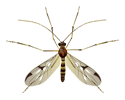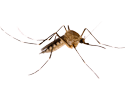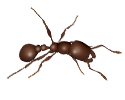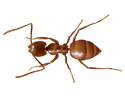Stinging Insects and What to Do About Them
Justin Schmidt is arguably the most dedicated entomologist in his field. He finds stinging Hymenoptera – bees, wasps, etc. – so fascinating that he willingly lets these creatures pierce his skin in order to fuel his research. This information is compiled in the “Schmidt sting pain index,” an anecdotal rating from 1-4 determining the severity of each insects’ attack response. He travels the world searching for these exotic creatures to compare each insect’s venom properties, one sting at a time. You can’t help but admire his passion!
Most of us can hardly bear the thought of being near a wasp, let alone actually getting stung by one. While our expertise may not be as extensive as Dr. Schmidt’s, we’d like to provide you with a few tips on handling those stinging insects that should make you feel a bit safer around them.
What Is A Stinging Insect?
Stinging insects are those that have the ability to transmit venom through a stinger, which is the only qualification setting them apart from other insects. This includes honeybees, wasps, and yellow jackets, but the term also applies to other insects like scorpions and fire ants. It’s not a requirement that these insects need to fly, only that they’re an arthropod able to pass along venom via stinger. They serve many functions in the ecosystem, with honeybees as nature’s pollinator and wasps as the world’s pest controller.
However, like most pests of their kind, stinging insects become problematic when their habitats overlap humans’. These insects frequently use our homes and outdoor living areas as breeding grounds. Some, like yellow jackets, even prefer to nest underground. Bees and wasps construct the most apparent nests in both indoor and outdoor environments, usually indicated by its pear shape. Stinging insects are all around you, so you should be prepared on how to handle their presence.
Handling an Infestation/Nest
The key to addressing stinging insects is to remain calm. In any instance when a bee or wasp feels threatened, it will attack and signal to others in its hive of the danger. Feeling endangered will cause a secretion of pheromones, drawing more of its kind to the area. Thus, refrain from swatting at or brushing off a stinging insect and remain in place. Be conscious of how many you notice and the areas where they appear, which will aid a pest professional if an expert opinion is needed. Also, instruct your children on how to stay safe when encountering a stinging insect.
Should you discover a nest, you should immediately contact a pest professional for an inspection. They will be able to properly diagnose the issue and safely remove the nest. If it’s a safe distance away from your home, they may leave the nest and provide necessary instruction for you and your family to avoid the nest. With honeybees, they may consult a beekeeper to harvest the nest and its honey. Regardless, destroying the nest should not be your own DIY pest project. DO NOT apply any flammable substance around the nest or use it as a piñata. Swarming bees or wasps attacking you could result in a fatal amount of stings. Never personally handle a stinging insect nest without the necessary supervision of a pest control expert.
Treating Stings
Most individuals won’t exhibit any severe reactions as a result of a sting. The most common bodily response is mild swelling accompanied by pain from the stinger insertion. Wasps don’t have a barbed stinger to remove, but removing a bee’s stinger can be accomplished with a pair of tweezers or even an edge of a credit card. Just be careful in handling, as implanting the stinger further into the skin can cause further irritation. Clean the affected area with soap and water once the stinger is safely out of the skin.
Symptoms should clear up over a few days. Swelling can be addressed with an over-the-counter antihistamine, such as diphenhydramine (commonly known as Benadryl). Observe how the medicine interacts with the swelling and whether or not it decreases over time. Should pain increase or swelling become more severe over a couple of days, immediately contact a medical professional.
It’s possible to go years without knowing you have an allergy to an insect’s venom. Hymenoptera sensitivity doesn’t have any relation to other allergies, so it’s impossible to determine if your shellfish or pollen allergies also indicate an allergic reaction to bee stings. If you’re stung and experience any of the following symptoms, seek medical help immediately:
- Swelling around the eyes, mouth, or throat
- Trouble breathing
- Bodily itching, not just around the sting area
- Nausea
- Hives
- Diarrhea
Depending on the severity of your reaction, a doctor may provide you with an Epinephrine pen to carry in case of emergencies. This could be a life-threatening ailment, so always defer to your family doctor or allergist on these matters.
Stinging Insects and What to Do About Them Serving
Houston
Beaumont | Conroe | Spring | Pasadena | The Woodlands | Richmond | Galveston
Baytown | Bryan | Cleveland | College Station | Cypress | Pearland | Sugar Land
Home » Stinging Insects and What to Do About Them






